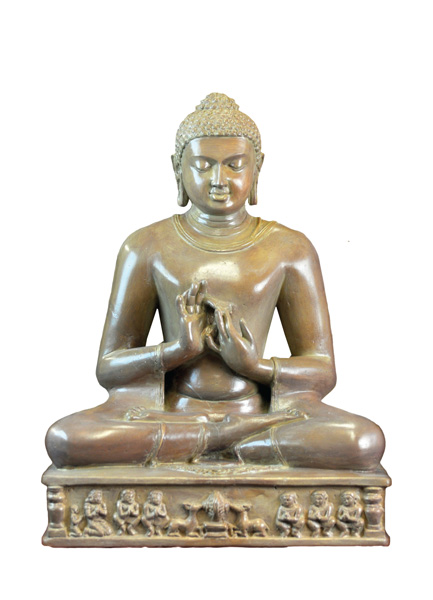QUESTION, another important one from Celsa:
Studying the Paticca-samuppada- Vibhaṅgasutta, and reading a couple of translations, I have a hard time understanding the concepts of “consciousness”, “fabrications” “contact” and “becoming”. B Sujatto, calls “fabrications”, choices. I find that word clearer, but how do we go from a choice to consciousness? Or better yet, what is considered ‘consciousness’ in this context? Can you give me an example of a real-life process where the development of dependency from one to the next step is shown?
ANSWER
The answer to your question is easier than you might suspect. Let me begin with an example per your request: if you see two round spots on a larger round surface maybe with a parallel line below, you see a face. The word sankhāra means literally ‘put together,’ and that’s exactly what you are doing in this case. Sankhara might also be translated as ‘conceptualization.’ We build up (fabricate) the world as we experience it through conceptualizations, layer upon layer. And our experience of the world is consciousness (notice, for the Buddha consciousness is something we make, not something that we simply show up for). Think of sankharas as the bricks out of which consciousness is built. Each brick is a small conceptualization, a putting together with other bricks to fabricate a larger whole. That’s it!
Why does Sujato translate sankharas as choices? We fabricate not only our perception of the world (consciousness), but also our plans for action in the world. They are built up conceptually before we physically act. For the Buddha, there is little difference: they are conceptual fabrications. We think of our plans for action as the result of many choices, but actually our perceptions of the world are also choices. We can perceive otherwise, and if we look very carefully at the way we perceive, we see that it is full of biases, particularly biases that reflect our personal interests. We can choose otherwise (which is what the Dhamma is all about). A self-centered person perceives the world differently than a selfless person, they have a different form of consciousness.
Now, kamma means ‘action’ in Pali. The Buddha refined this to mean ‘intentional action,’ which is action made on the basis of choice (rather than by accident, for instance). The Buddha then extended this beyond bodily and verbal actions, to mental actions as well. That is, by planning to do something we are already producing kamma. So he refined the meaning of kamma further to mean simply ‘intention,’ which is ‘choice.’ But if our perceptions are intentional as well, then they are instances of kamma. The upshot seems to be that sankhara = kamma. Though I am not aware that the Buddha equated them in this way, the words are used pretty much interchangeably. Kamma is more common in the domain of ethics, and sankhara in the domain of wisdom. But we talk about sankharas of body, speech and mind, as we do for kamma.
An important aspect of kamma or sankhara is that they become habituated into dispositions, that is, we gain habit patterns in our conceptualizations or choices, and we each have a unique sets of dispositions as a result. In fact acquiring skills is all about improving dispositions, and our entire Buddhist practice is about developing wholesome dispositions. Both kamma and sankhara can refer to particular conceptual fabrications performed right now, or to the dispositions that underlie those choices. We talk about ‘old kamma’ vs. ‘new kamma.’
The transition from sankharas to consciousness in dependent coarising has been interpreted in two ways. The first is just as I have explained. The second is that it describes the process of rebirth. Our dispositions define who we are individually (including where we are in our practice). On the second interpretation, at death our dispositions from the previous life are all bundled up into a special kind of consciousness, that travels–zap– to the mother’s womb at conception. The second is consistent with the account of sakharas given here, but not with the general account of consciousness in the early texts. There consciousness is always a momentary event, a flash of fabrication. The choice between the first and second interpretation effects how the subsequent links are interpreted: name and form, the sense spheres, and contact.
— After hearing my answer Celsa added, “So, consciousness is making sense of the reality as we are able to perceive it, conceptualize it and interact with, right? That’s why is so unique for every person. As stupid it may be, one very simple thing that had me reflect on this has been why I like to have cleanliness and order, and other people don’t seem to see the need for them.”
You’ve got it. I started out as one of the other kind of persons, but the effect of wholesome Buddhist practice on my kammic dispositions has made me more like you.
By the way, there is now a handy submission for at my new site: https://cintita.org/blog/ . However, the post will still show up on my old site, and in your mailbox.

Leave a Reply